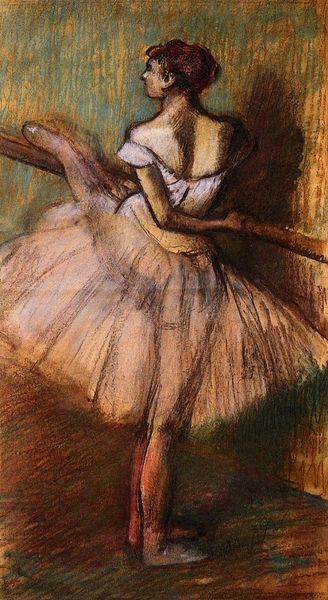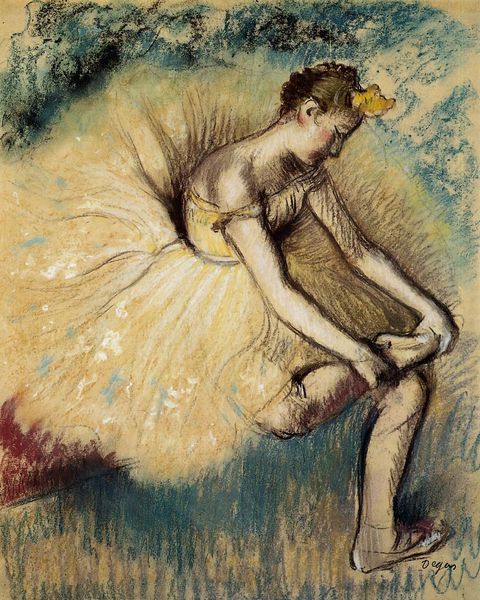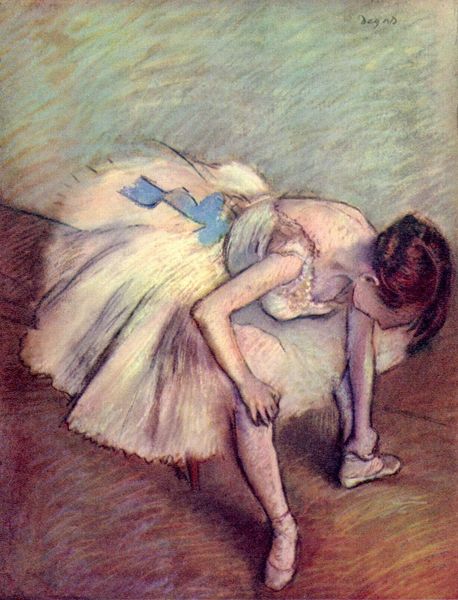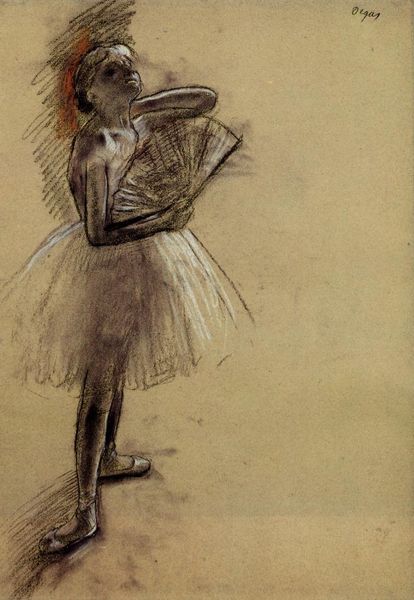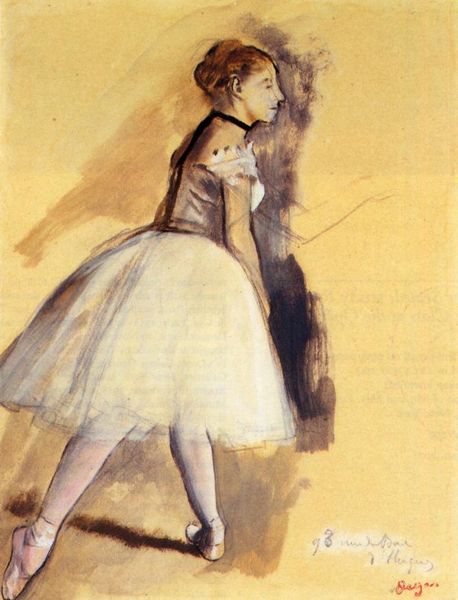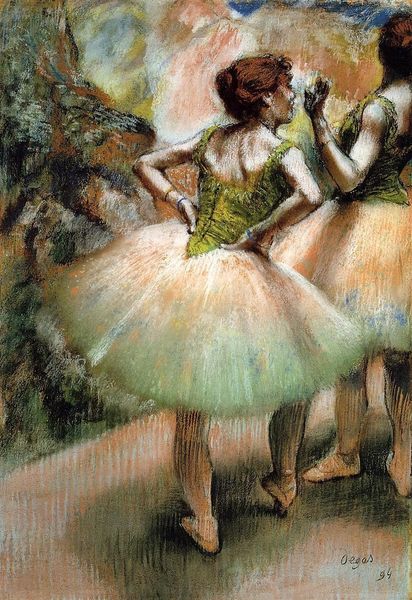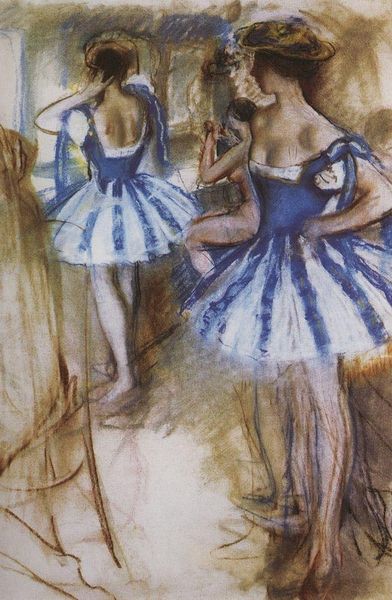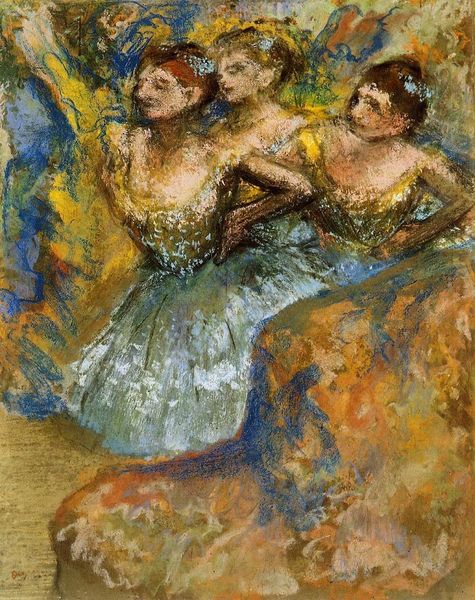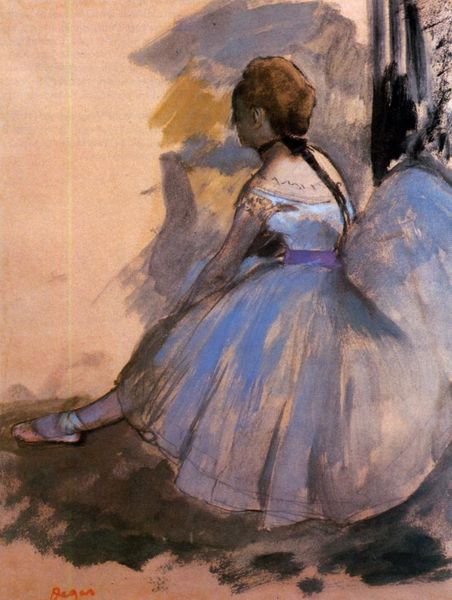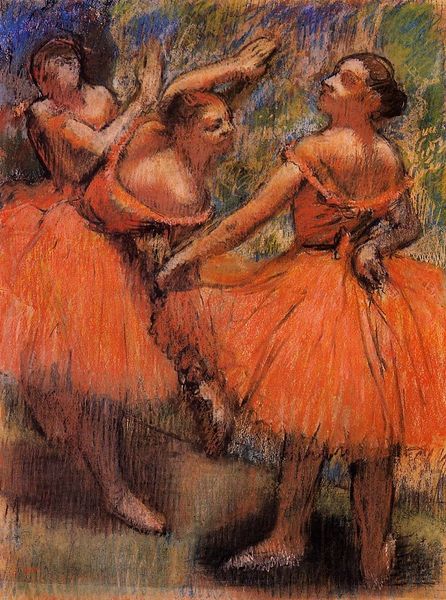
Copyright: Public domain
Editor: This is "Pink Dancer" by Edgar Degas, created around 1900 using charcoal and pastel. It feels very intimate, like a snapshot of a private moment. The dancer is caught off guard adjusting her shoe, head bowed and all the lines seem to move towards her gesture, but away from her face. How do you interpret this work? Curator: What I find striking is how Degas uses a seemingly informal pose to make a larger comment about the role of women in the late 19th century art world. He avoids romanticizing the dancer, instead showing the labor behind the beauty that was so often presented on stage, often for the enjoyment of men, from political and economic elites to art critics. Notice how her gaze is directed downwards, removed from our own. Editor: That's fascinating. So you're saying that this isn't just a pretty picture of a dancer, but it's also commenting on the position of these women? Curator: Precisely. He's using the visual language of Impressionism—the focus on fleeting moments and everyday life—to engage in a dialogue about the societal expectations placed on these dancers and the voyeuristic gaze of the public. It wasn't just about depicting reality, but engaging with its power structures and inequalities. Editor: I had never considered it that way before. I always thought of Degas as simply capturing movement and light. Curator: Many did, and still do! But I think understanding the cultural and historical context allows us to appreciate the depth and complexity of his work beyond its aesthetic appeal. His choice of depicting them backstage, or between acts challenges what the public usually sees as the truth and nothing but the truth of the dance, or in many ways any artwork that aims to mirror reality. Editor: That makes me want to re-evaluate other Impressionist works too. It’s given me much to reflect on! Curator: It’s amazing what new insights you can uncover when you really dig deep into the history behind art!
Comments
No comments
Be the first to comment and join the conversation on the ultimate creative platform.
